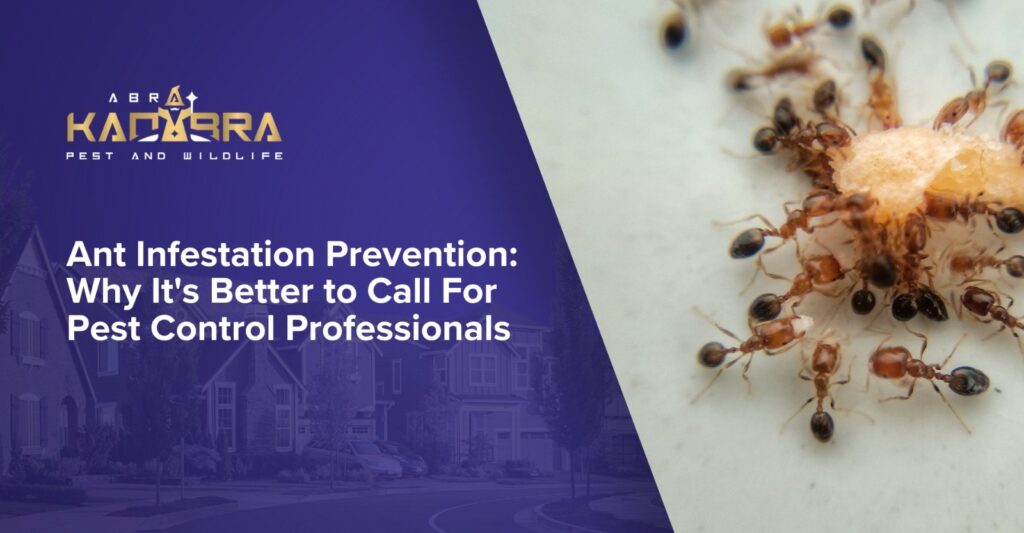Spring is a precursor to summer. It’s when temperatures start to warm up and the ice melts. It’s when “Spring Cleaning” comes in. Preparing your property for the next few seasons is crucial, as is decluttering stuff that no longer serves a purpose or cleaning up the most taken-for-granted spaces.
Imagine yourself doing your spring cleaning, and you lift a storage box left in the corner throughout the winter, and you see an army of ants panicking and running for their lives. When you experience this kind of situation, don’t fret.
Explore the many parts of your house, especially nearby food sources or hidden corners left untouched. As temperatures rise in Minnesota, ants become more active and search for food, water, and shelter. Spring and summer bring a surge in ant infestations, with colonies expanding and foragers entering homes and businesses searching for sustenance.
If left unchecked, these tiny invaders can quickly become a significant nuisance. Fortunately, there are effective ways to prevent an ant infestation and protect your property.
Our team of experts at Abra Kadabra Environmental Services has extensive experience managing and preventing ant problems, and we’ve compiled expert advice to keep your home or business ant-free this season.
Understanding Ant Behavior
Ants are social insects that live in colonies, ranging from a few hundred to millions of individuals. When temperatures rise, worker ants leave the nest searching for food and water. They leave behind pheromone trails that guide other ants to the discovered resources. If food sources are abundant and easily accessible, ant activity can escalate rapidly, leading to a full-blown infestation.
Common ants in Minnesota include:
- Odorous house ants – These tiny, brown ants emit a rotten coconut smell when crushed and are frequently found in homes.
- Carpenter ants – Larger black ants that tunnel into wood, potentially causing structural damage.
- Pavement ants – Often found nesting under sidewalks, driveways, and patios, these ants can enter homes in search of food.
Identifying the ants and their behaviors can help you know when to green light and call for pest control professionals. For signs of infestations, it is essential to call for pest control professionals and not touch anything to avoid further problems. According to our entomologist, Max Frederiksen, Ant treatments performed by homeowners usually move ant colonies around and often worsen the situation when they bud.
Now that we’re able to discuss about identification, it is also important to know how to prevent ants colonies from forming in your property. Here are some tips on how to prevent ant infestations:
Tips for Preventing Ant Infestations
1. Eliminate Food Sources
Ants are constantly on the lookout for food. Even small crumbs or spills can attract them. To prevent ants from invading your home:
- Wipe down countertops and tables regularly to remove food particles and residue.
- Sweep and vacuum floors frequently, especially in kitchens and dining areas.
- Store food in sealed, airtight containers to prevent ants from accessing it.
- Rinse and clean food containers before placing them in the trash or recycling.
- Avoid leaving pet food out overnight, and clean pet bowls regularly.
2. Remove Water Sources
Just like food, ants need water to survive. Addressing moisture problems can make your home less appealing to ants:
- Fix leaky pipes, faucets, and drains.
- Ensure proper drainage around your home’s foundation.
- Use a dehumidifier in damp areas such as basements and crawl spaces.
- Wipe up water spills and don’t leave standing water in sinks.
3. Seal Entry Points
Ants are tiny and can enter through the smallest cracks and gaps. Prevent their access by:
- Sealing cracks in walls, windows, and door frames with caulk.
- Installing weather stripping on doors and windows to close gaps.
- Repairing damaged screens and ensuring they fit tightly.
- Using expanding foam or steel wool to block gaps around utility pipes and wires entering your home.
4. Maintain Your Yard
Ants often build nests outside before making their way indoors. Keep your yard well-maintained to discourage infestations:
- Trim trees and shrubs away from your home to prevent ants from using branches as bridges.
- Keep mulch and woodpiles at least a few feet away from the foundation.
- Remove decaying wood and stumps that may house carpenter ants.
- Keep grass and vegetation well-trimmed to reduce nesting sites.
Being a responsible property owner and regularly cleaning your space is not just putting ants away, but it is also preventing other pests from coming around. However, no matter how much we try to avoid infestation problems, there are some scenarios we cannot avoid. For example, you just bought a property with a present pest problem. That kind of situation is out of your control. What you need to do is to call for the right pest control professionals to have your problems fixed.
Why You Should Call a Professional Pest Control Service
Abra Kadabra Environmental Services provides customized pest control solutions for long-term ant prevention. Our experts can:
- Identify the type of ant species and often locate nests.
- Implement targeted treatments that address the source of the infestation.
- Provide long-term prevention strategies to keep your home or business ant-free.
Conclusion
Now that we’ve covered prevention and emergency care when dealing with ant infestation, you can be more knowledgeable about how to deal with these situations head-on. Please reach out to Abra Kadabra to get the right care for your ant infestation problems. Our services include a lifetime warranty and regular inspections to ensure that you receive the best personalized care for your property.

